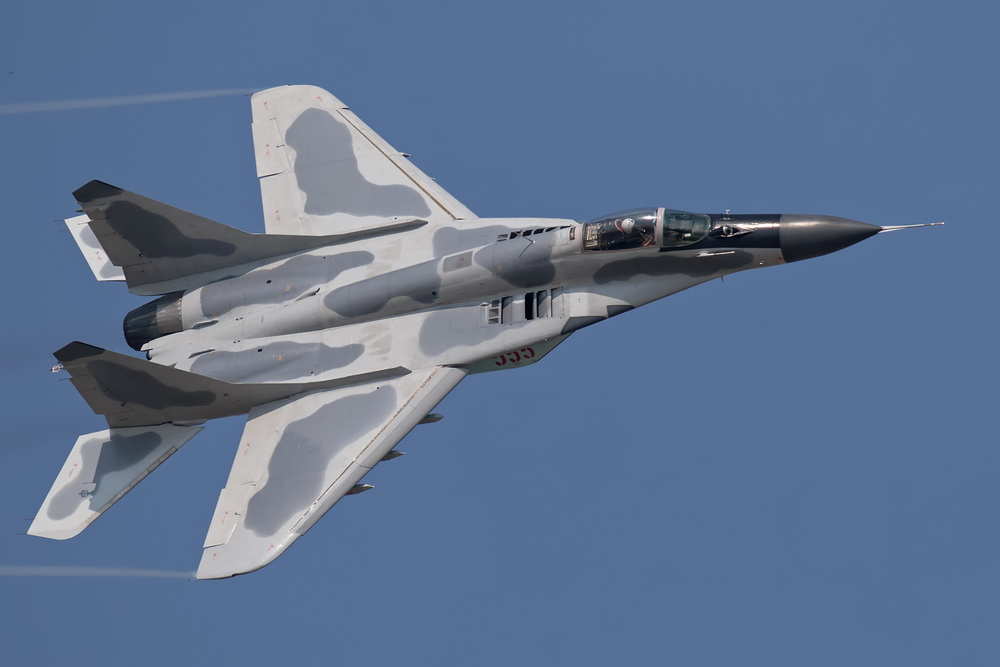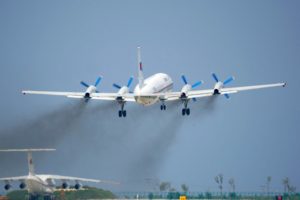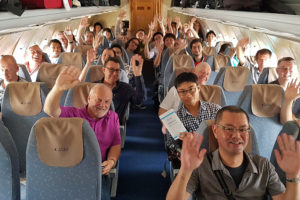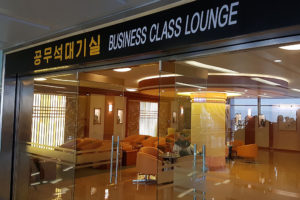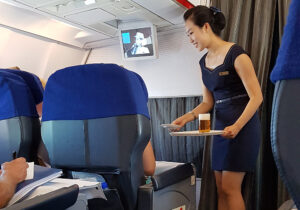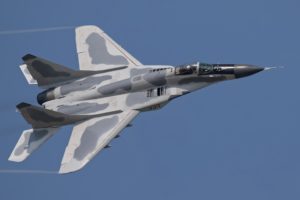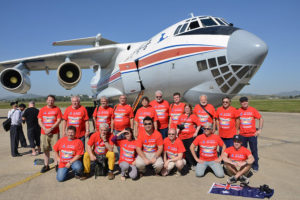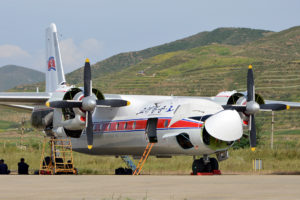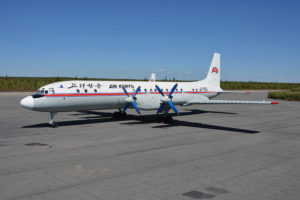Wonsan Air Festival 2016 Highlights
The first Air Show in North Korea
There's no airshow like this one!
There's no country like North Korea!
Text by Charles Kennedy
Photography by Sam Chui, Xu XiangJiang and Xiao Yao
Videography by Sam Chui
Video:
North Korea is known for its isolation from the rest of the as a result of decades of Cold War geopolitics. Traditionally it has had very few foreign visitors – the capital city Pyongyang receives less than two international flights a day – and its military has been off-limits to foreign eyes due to high political tension on the Korean peninsula stretching back to the division of Korea as a result of post-World War 2 superpower rivalry.
While regional tensions remain, under new leader Kim Jong Un, the youngest head of state in the world, North Korea is pursuing a policy of encouraging tourism and has constructed new infrastructure around the east coast port city of Wonsan, including a ski slope and a number of high-end resorts, mostly aimed at the Chinese market.
The aerial gateway to Wonsan the brand-new Kalma airport, constructed to an impressive international standard. While international flights have not yet begun, the facility was inaugurated in historic fashion on the weekend of September 24-25 with North Korea’s first airshow.
Juche Travel Services has operated airline-themed tours of North Korea since early 2012, taking groups of aviation enthusiasts into the so-called Hermit Kingdom to fly on national carrier Air Koryo’s fleet of Soviet-era machines (Tupolev Tu-134 and -154, Ilyushin Il-18, -62 and -76, and Antonov An-24) which are not used for regular airline service but remain fully airworthy as a strategic reserve fleet.
An airshow represented a major step forward as it meant international access and scrutiny of North Korea’s air force, which has been off-limits with good reason; after post-Cold War thawing on the Korean Peninsula during President Clinton’s so-called “Sunshine Policy”, George W Bush included North Korea in his infamous “Axis Of Evil” speech in 2002.
However the Korean People’s Army Air Force line-up, while representing considerable firepower, does not include anything the world hasn’t seen close up elsewhere, and at the end of 2015 the decision was made by the North Korean authorities to allow the air force to participate in the Wonsan air show alongside the Air Koryo fleet.
The international group included plenty of familiar faces from the global aviation community including previous participants in Juche Travel Services aviation tours. After a big social in a Beijing restaurant on Thurday September 22, the group packed Air Koryo’s regular Friday afternoon Tupolev Tu-204 flight JS 152 from Beijing to Pyongyang, where we connected airside directly onto a Ilyushin Il-62M or a Tupolev Tu-154B to Wonsan, arriving in the early evening.
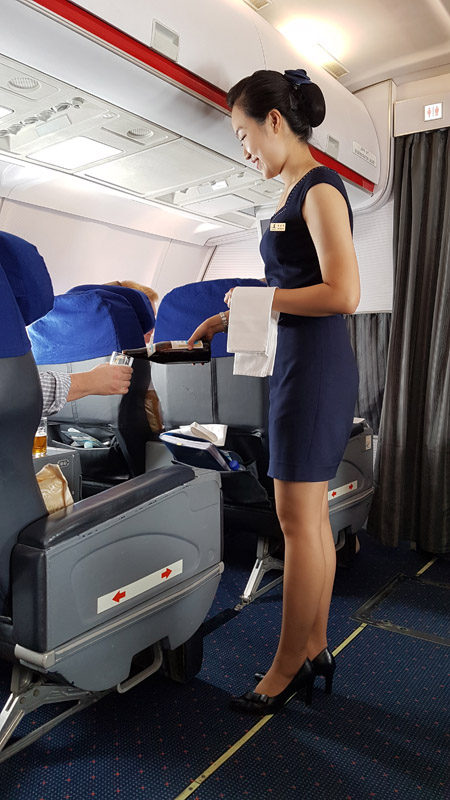
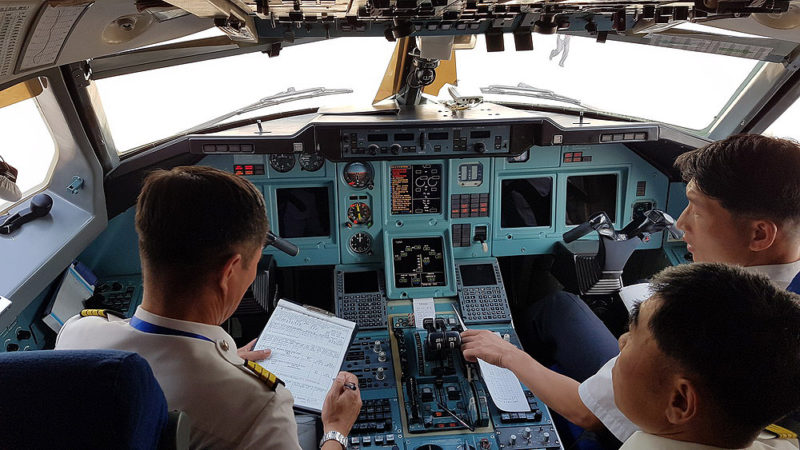
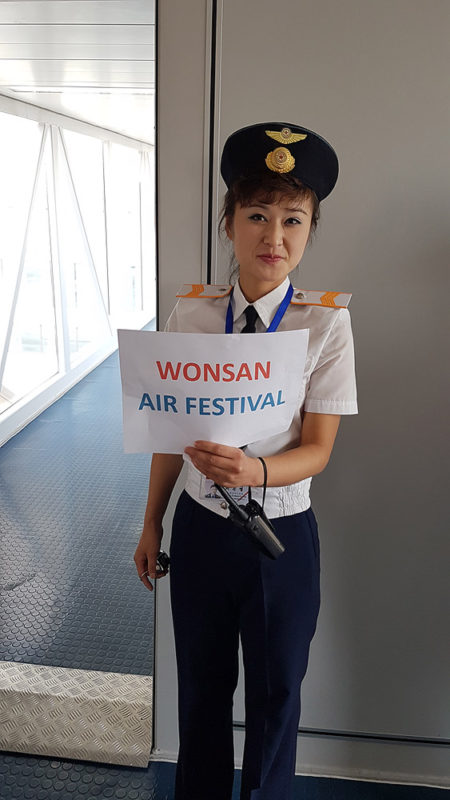
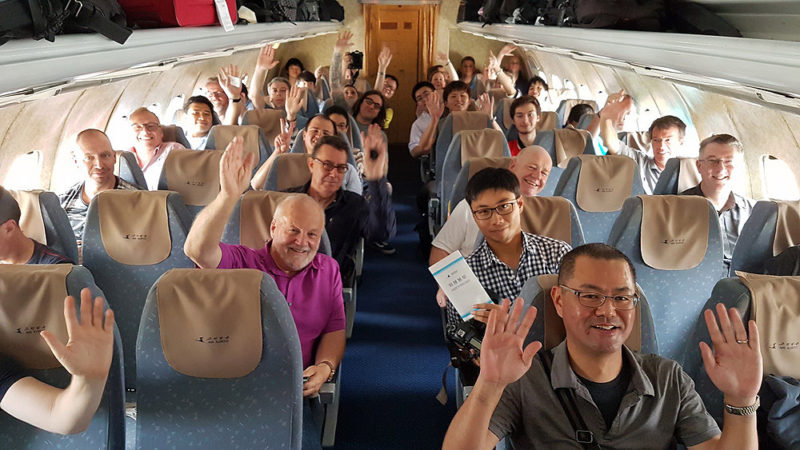
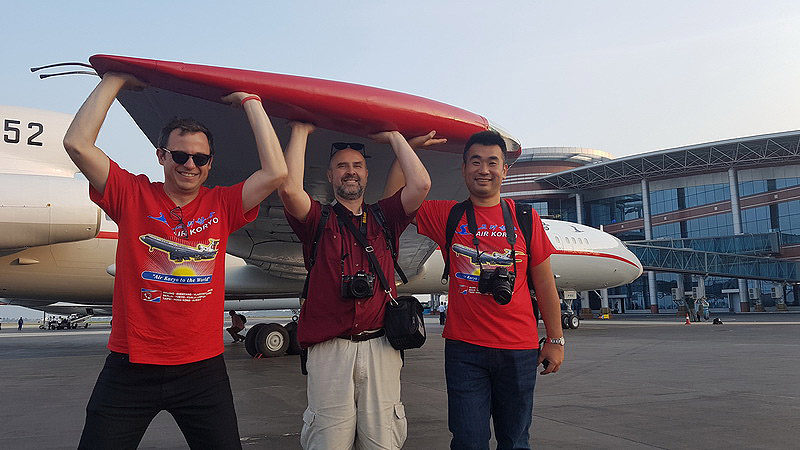
Day one - September 24, 2016
Day one of the Wonsan airshow dawned clear and bright, and the group was bussed to the Wonsan air terminal to clear security. After an hour of ramp access to photograph the Air Koryo fleet, the group walked across the taxiways and runway 17-35 to the far side of the field for the first big surprise of the weekend awaited.
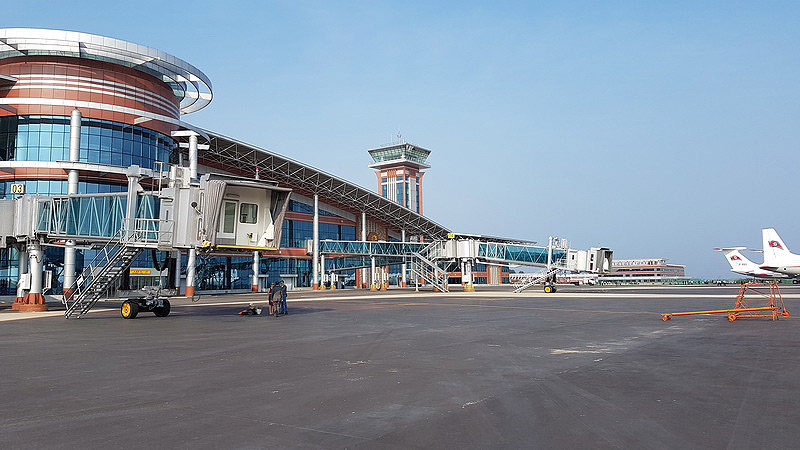
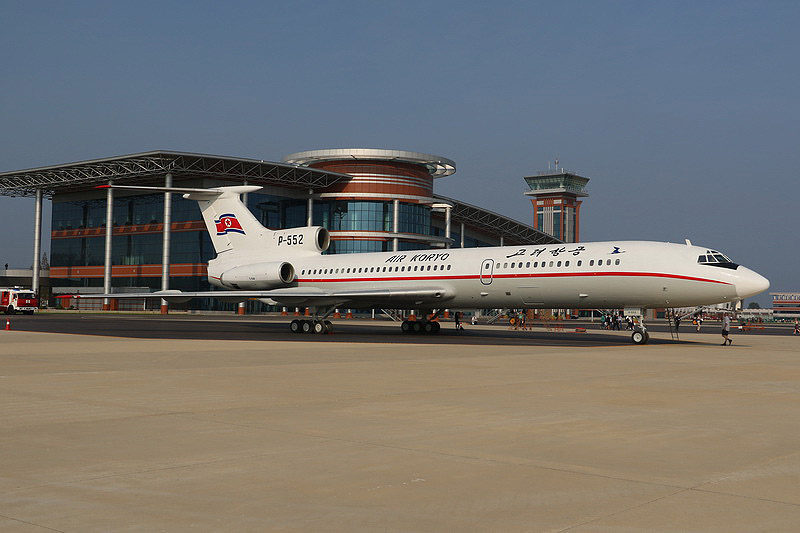
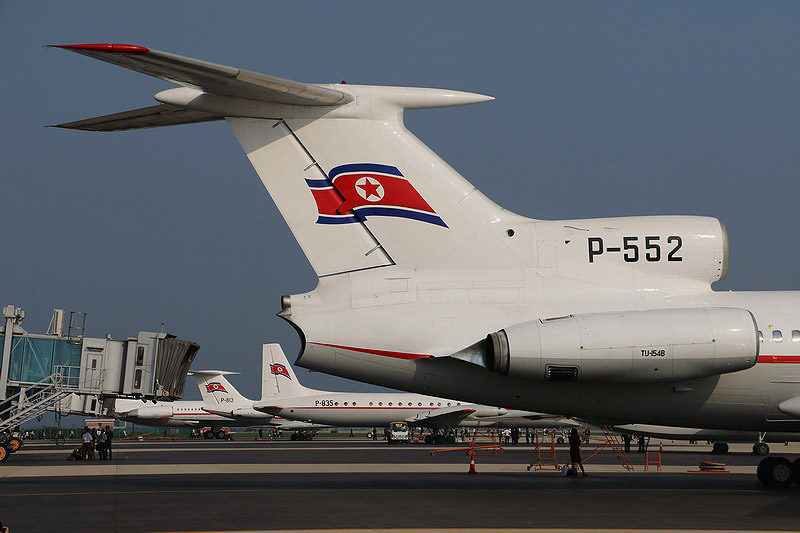
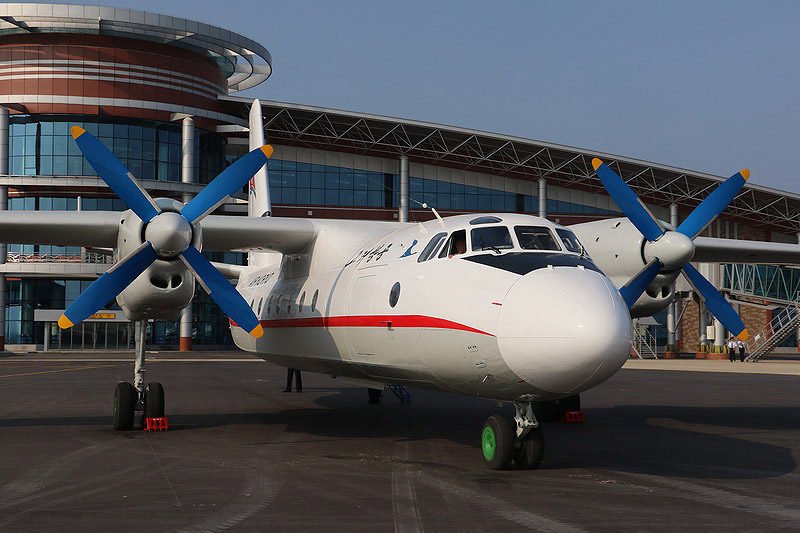
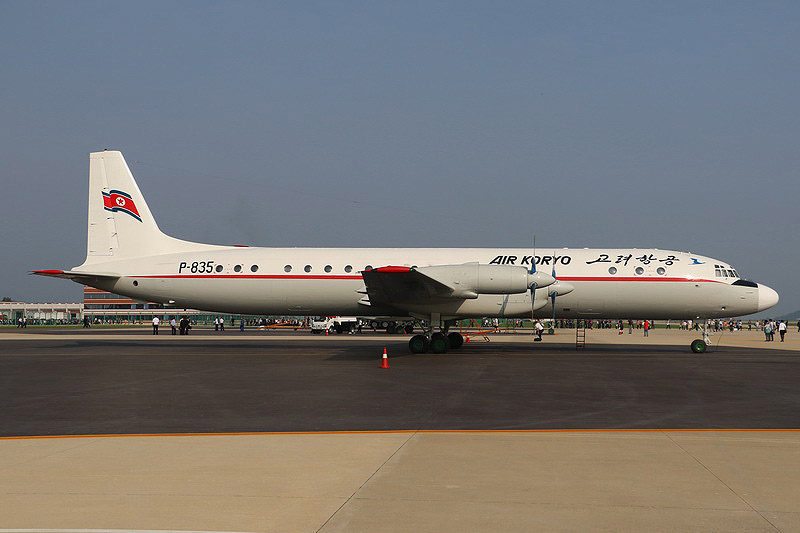
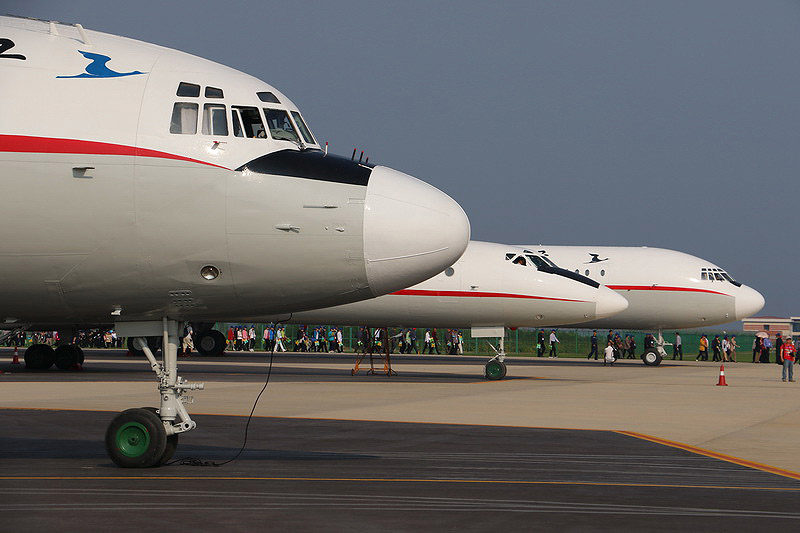
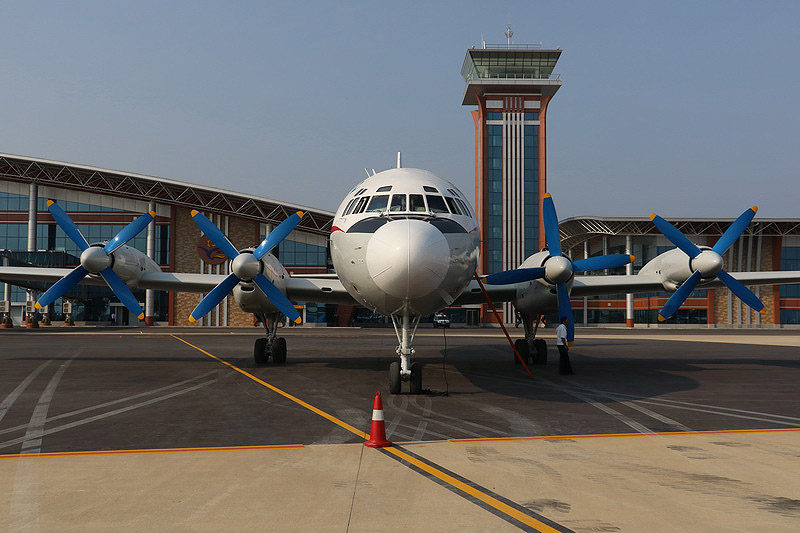
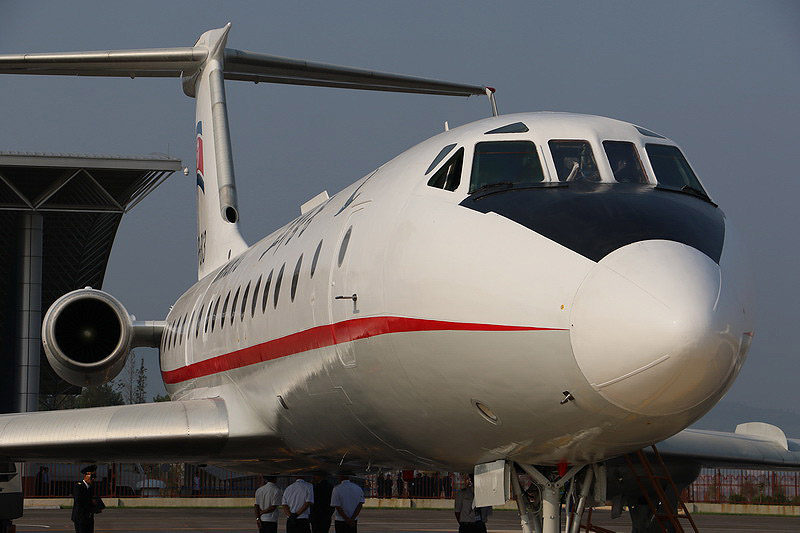
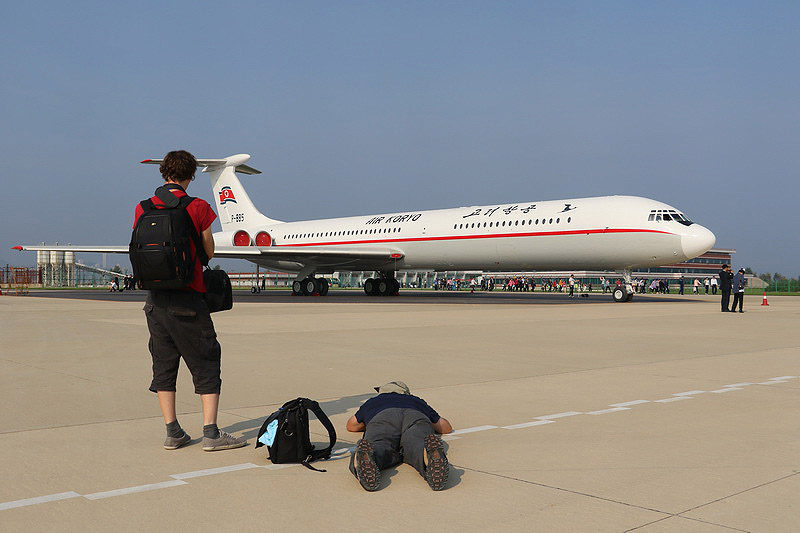
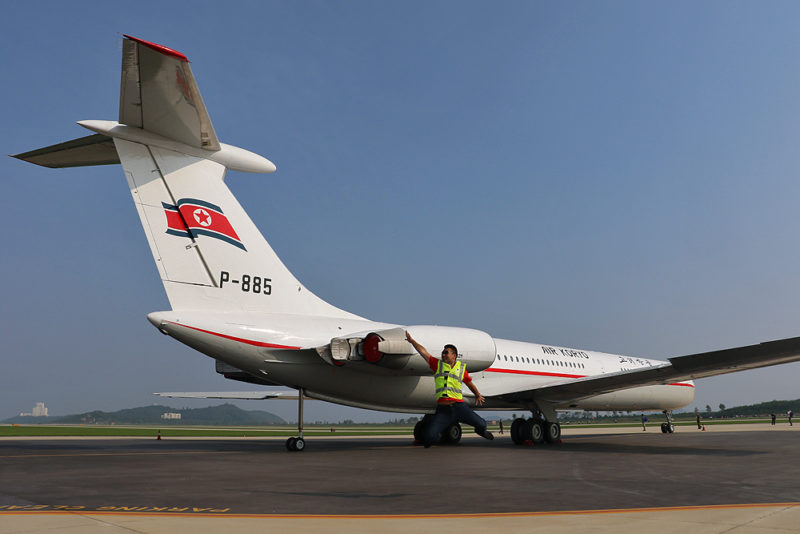
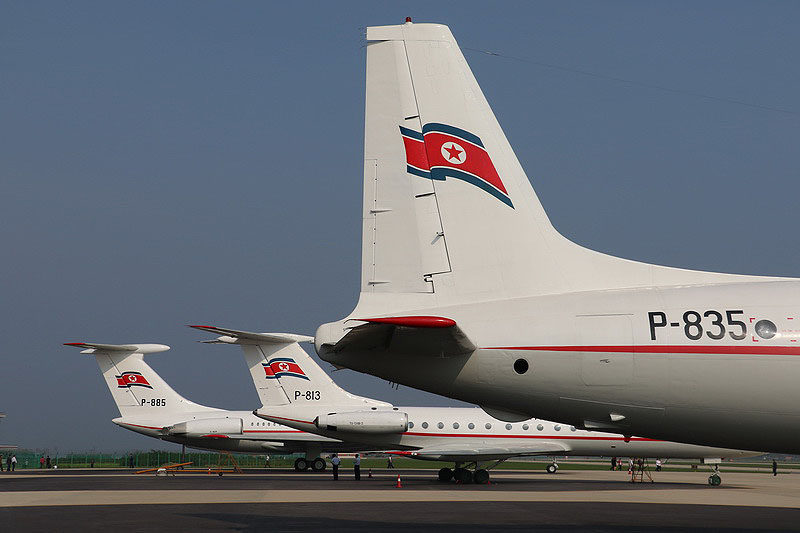

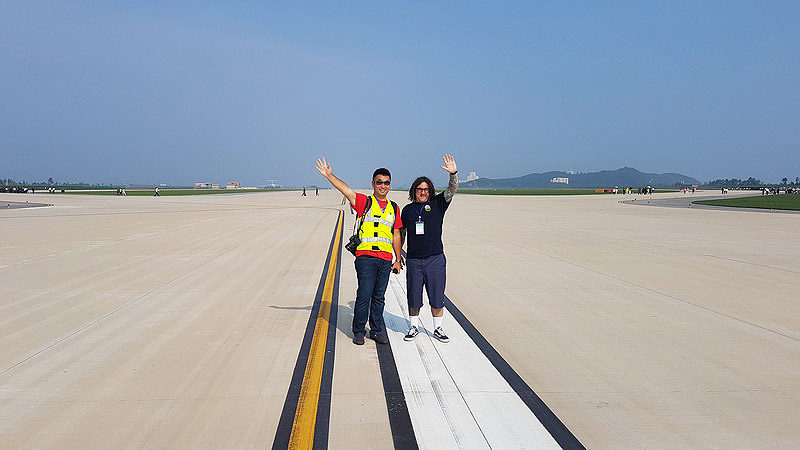
The opening ceremony speeches – translated into English and Korean – toasted peace and international trust and cooperation thanks to the bonds of aviation, but even as David Thompson-Rowlands spoke to the massed thousands, Air Koryo’s 1969-build Ilyushin Il-18 was starting engines over on the flight line.
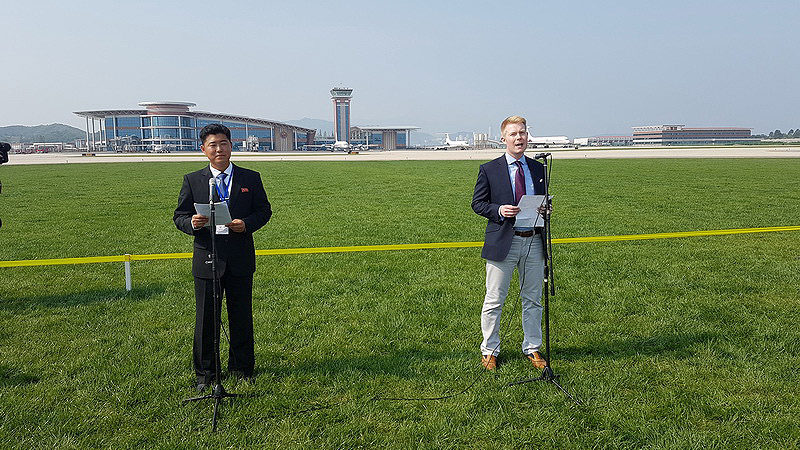
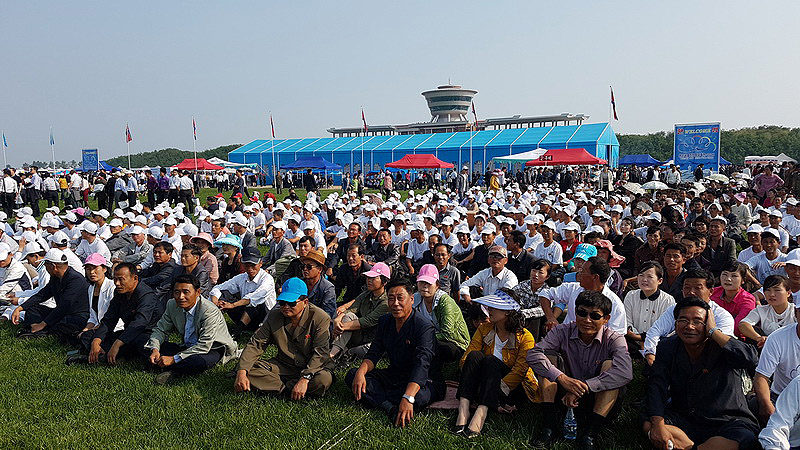
A useful machine for local work – despite its age it fulfils a unique role for the country as it can operate into rough strips with a poor surface and carry 110 passengers, something no modern type can provide, so despite its age its future is assured. The smoky four-engine propliner circled the field a couple of times, showing off its graceful lines, as one of the major stars of the show taxied out, a Korean People’s Army Air Force Mikoyan MiG-29.
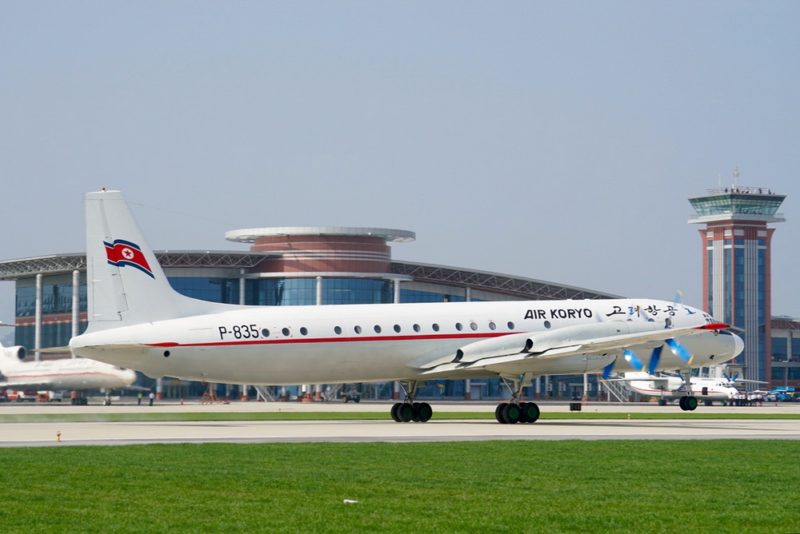
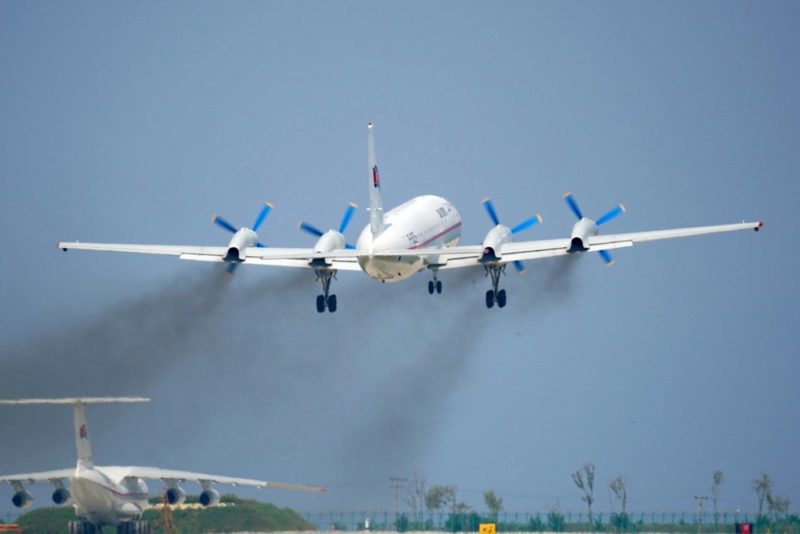
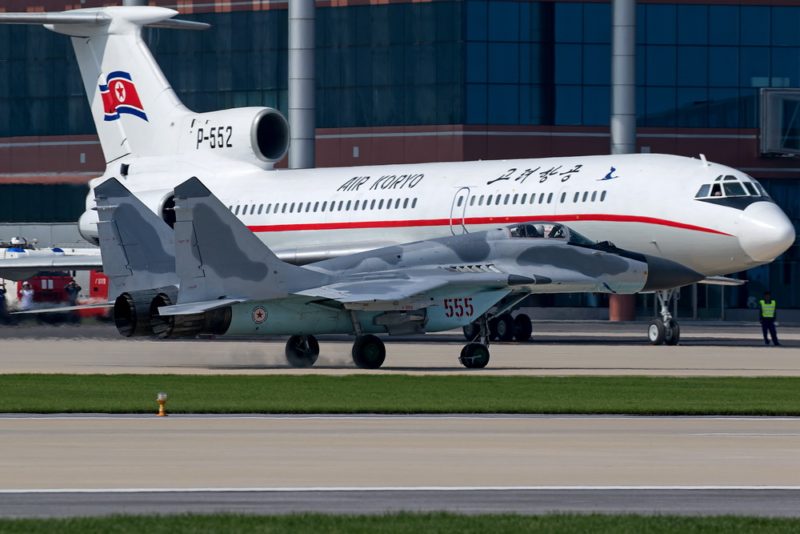
As soon as the Il-18 was back on the ground, the MiG went blasting off runway 15 and into a vertical climb. Its unmistakable silhouette was barely visible against the bright blue sky but only seconds later it was back down at low level, beating up the runway, performing agile barrel rolls and at one point went blasting over the crowd inverted at low level, dizzying the masses with its power, grace and noise.
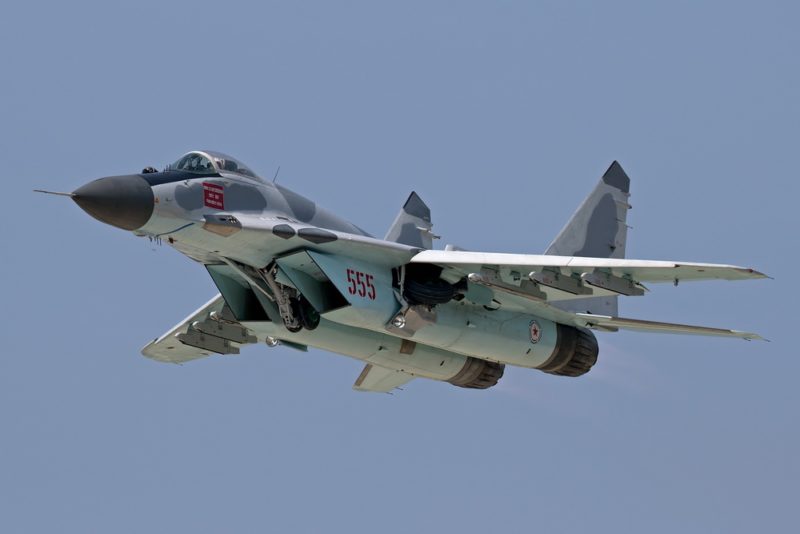
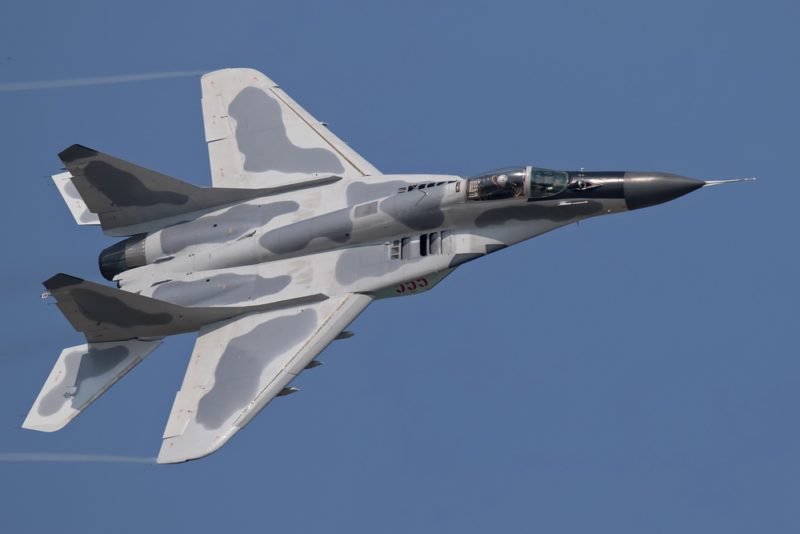
The programme tended to alternate between civil and military, so the 1985-build Tupolev Tu-134 twin-jet was next up. It must be said that for a first airshow in the country, the North Koreans got a lot right, including a tempo of flying that never let up – while the MiG-29 was raging overhead, the Tu-134 was starting engines on the ramp and by the time the MiG was floating over the touchdown zone, the Tu-134 was at the holding point ready to launch. Add in the excitement of the crowd and flags and bunting fluttering in a breeze that carried with it the distant thump of popular music and the whiff of frying snacks and beer, you could be at any airshow in the world, and the international group had to remind itself constantly – we’re in North Korea.
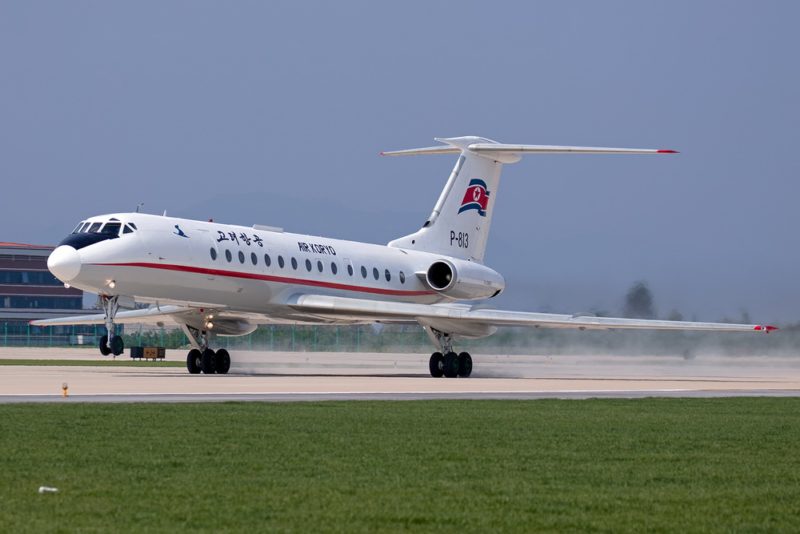
After the Tu-134 came an agile display by the Sukhoi Su-25 ground attack aircraft, which almost matched the MiG-29 for aerobatic skill and provided a fantastic end to the first half of the day’s flying programme.
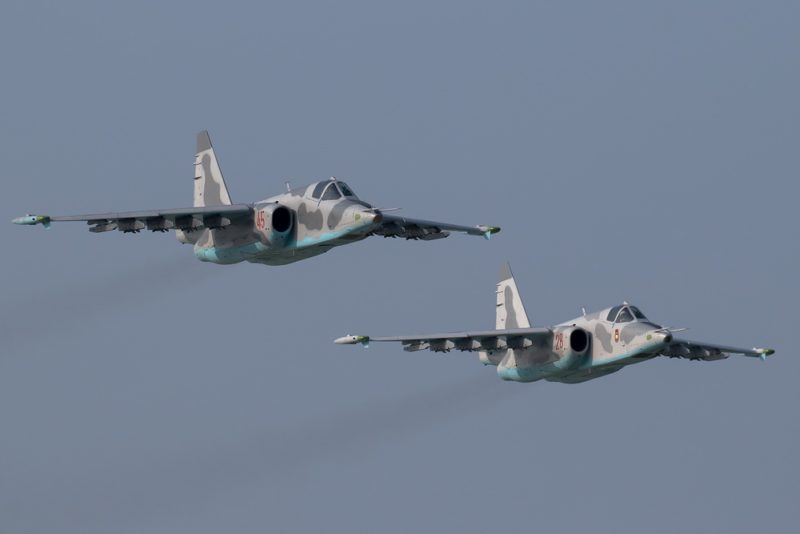
The international group was escorted back across the runway to the terminal for an impressive buffet lunch, and then were offered the option of remaining on the terminal side; years of hosting aviation tourism has taught the Koreans that photographers always want the sun at their back and as the sun passed over the top of the north/south-aligned runway, the main airshow site offered diminishing photographic opportunities.
Here are some pictures of the Terminal of Kalma Airport.
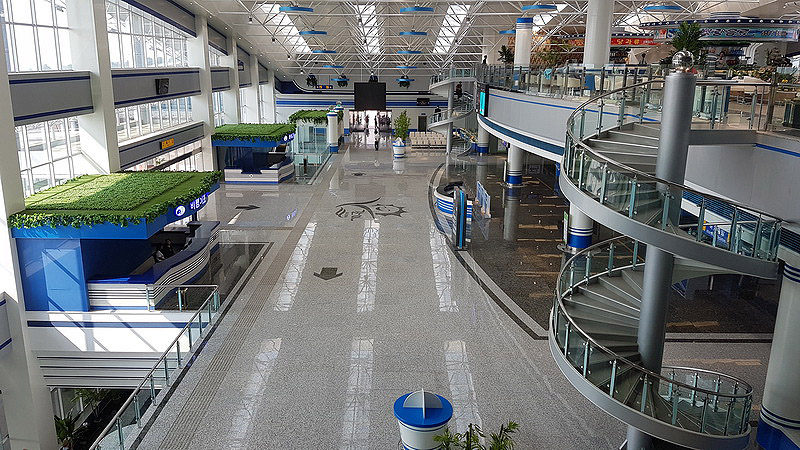
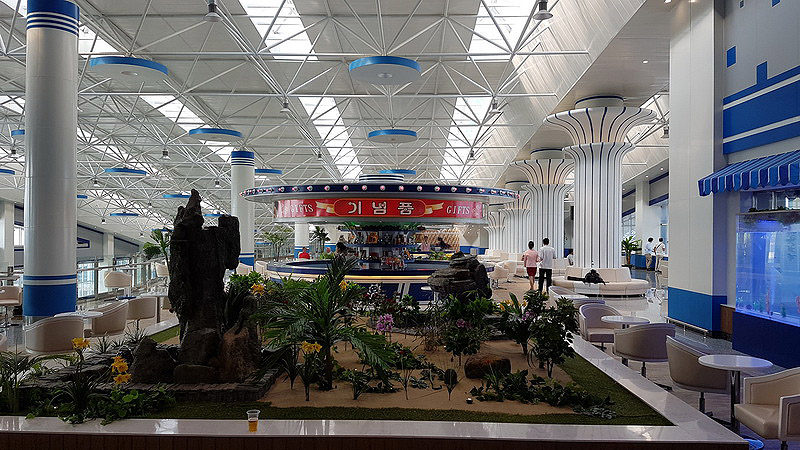
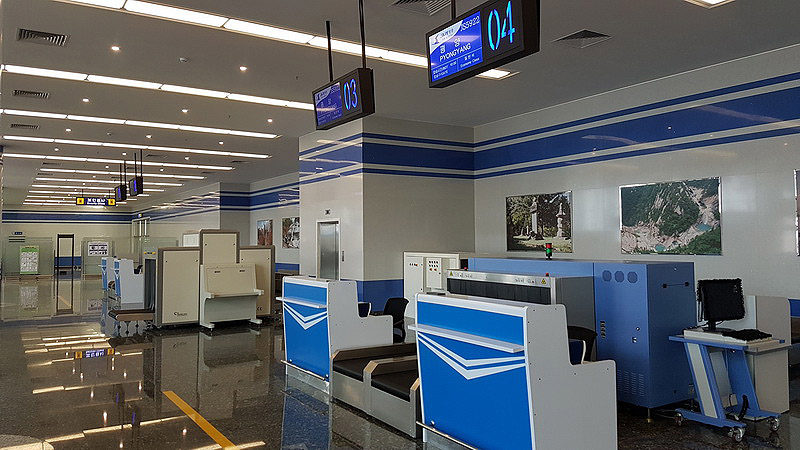
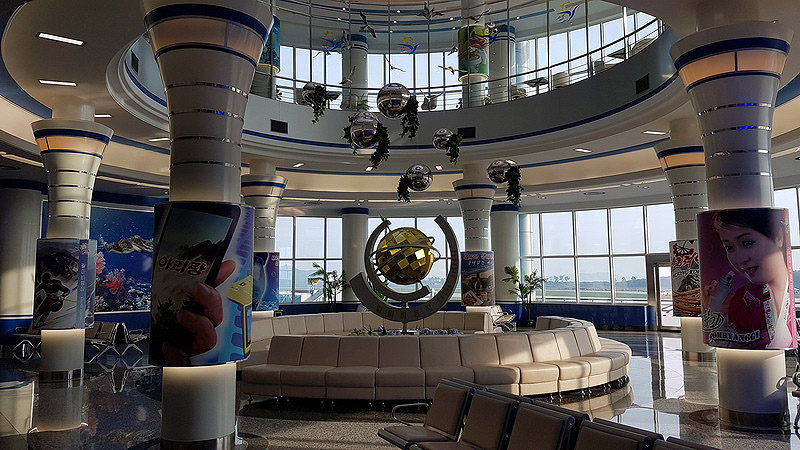
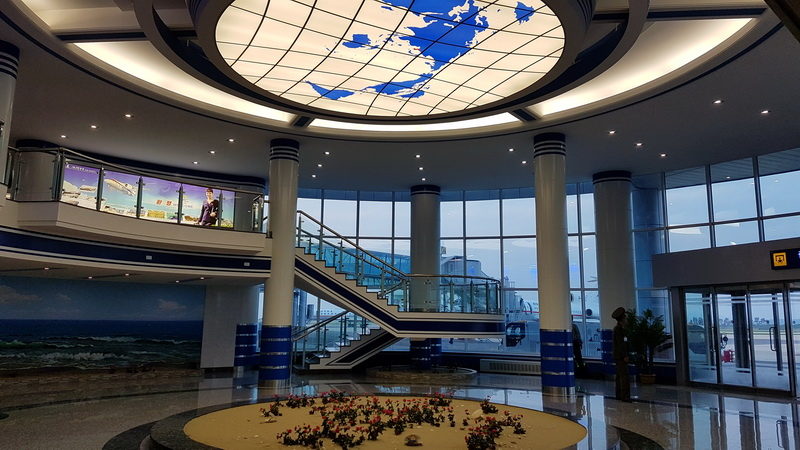
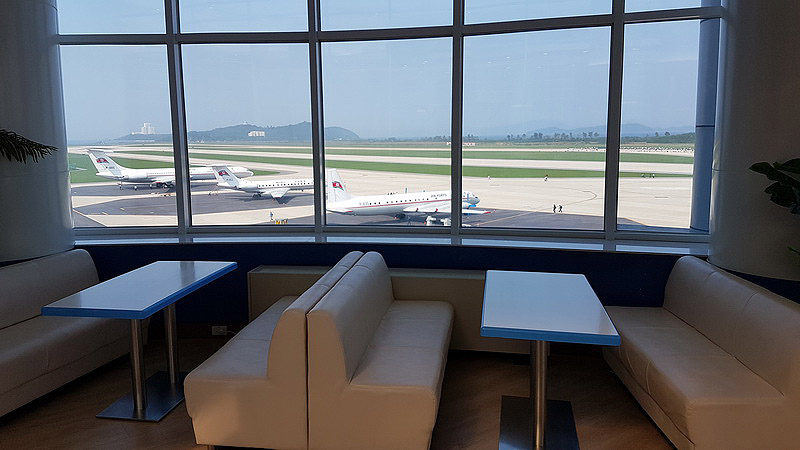
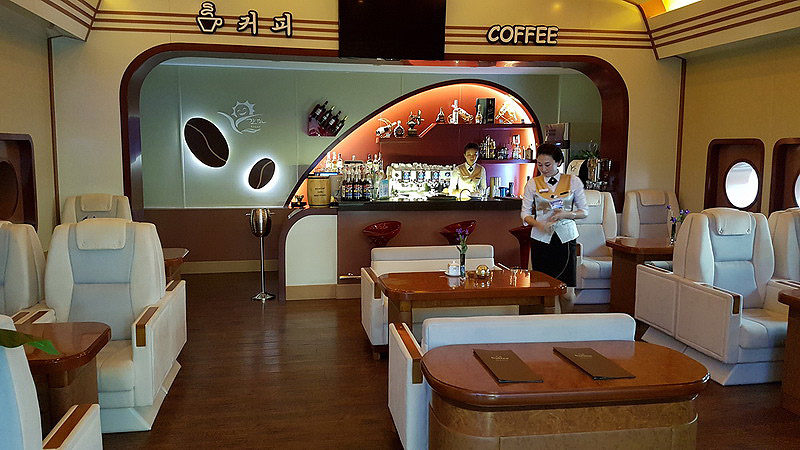
The afternoon kicked off with a smash hit – two MiG-21s flown by female pilots provided a deafening masterclass in formation flying.
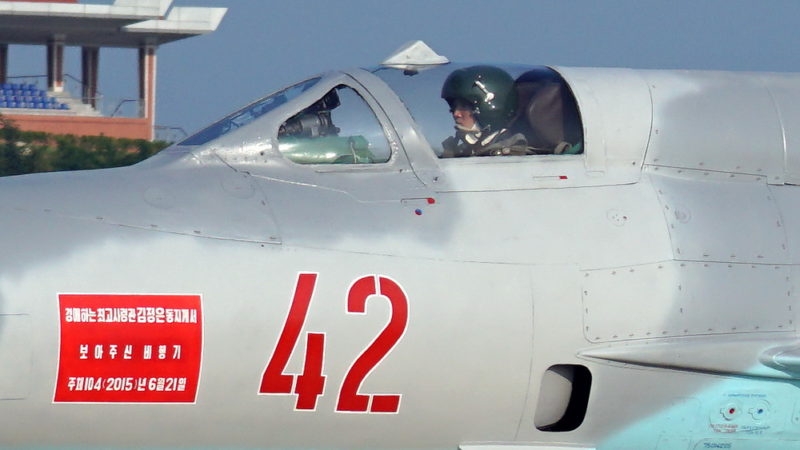
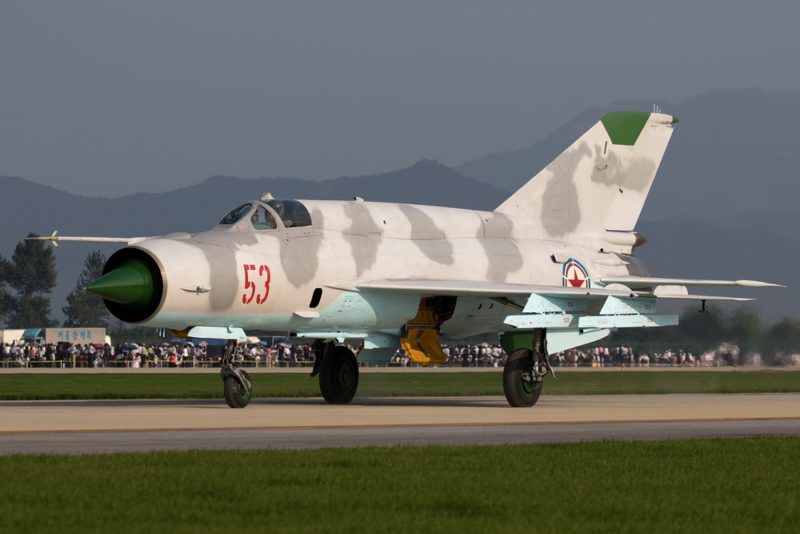

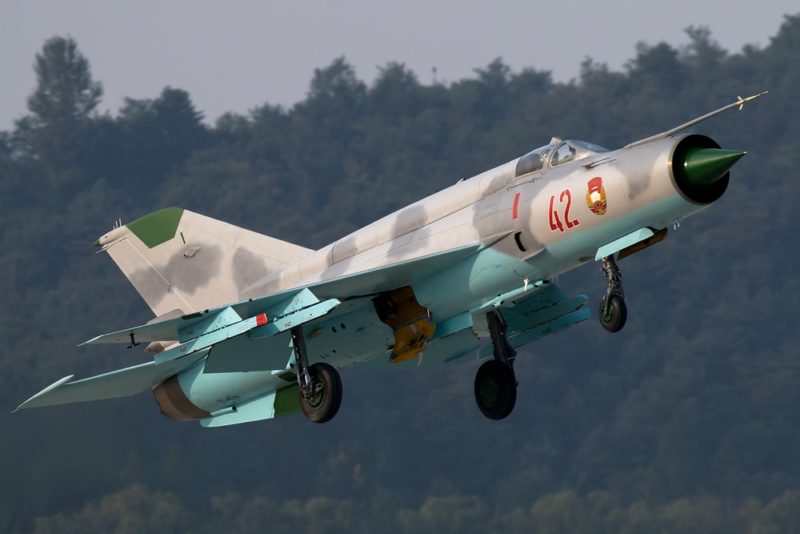
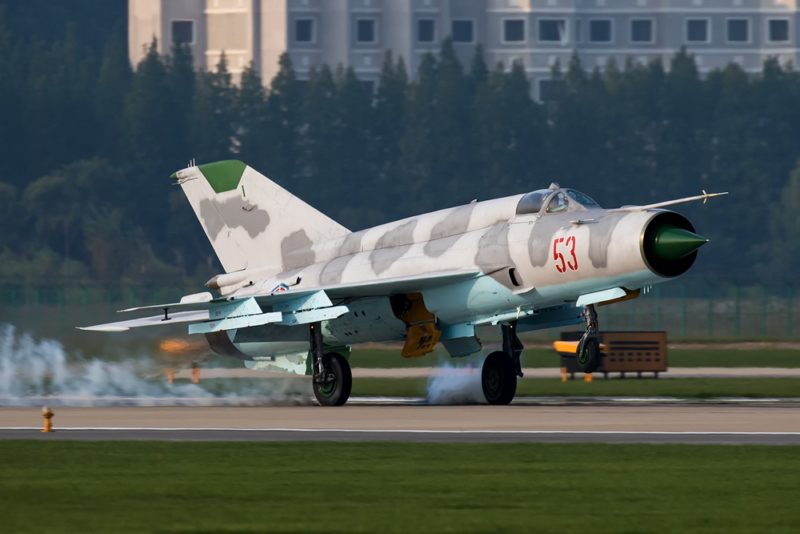
Followed by a graceful low-level fly-by down the runway by the four-engine flagship of the Soviet age, the four-engine Ilysuhin Il-62.
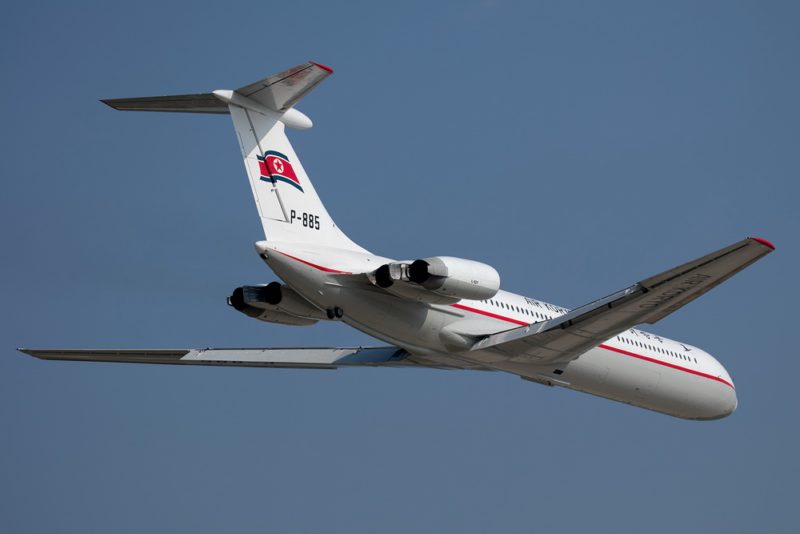
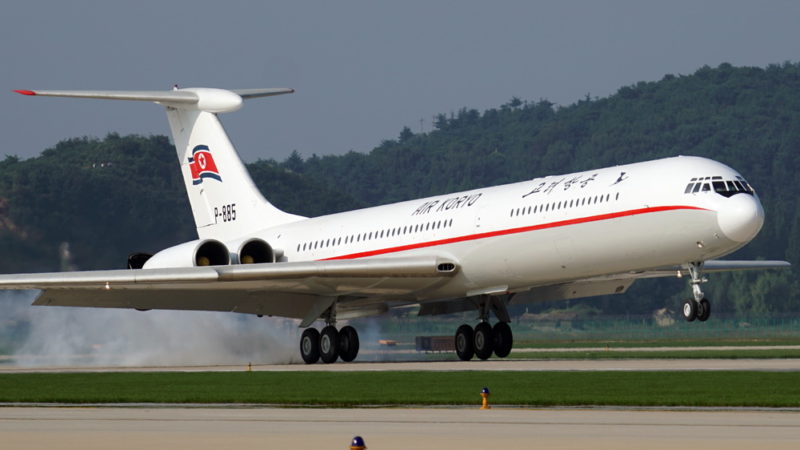
The Sukhoi Su-25 made another appearance, this time joined by two sister ships for a display trio, followed by a two-ship display by the only Western hardware of the day, a pair of Hughes 500 helicopters sold to North Korea in 1985 via West Germany.
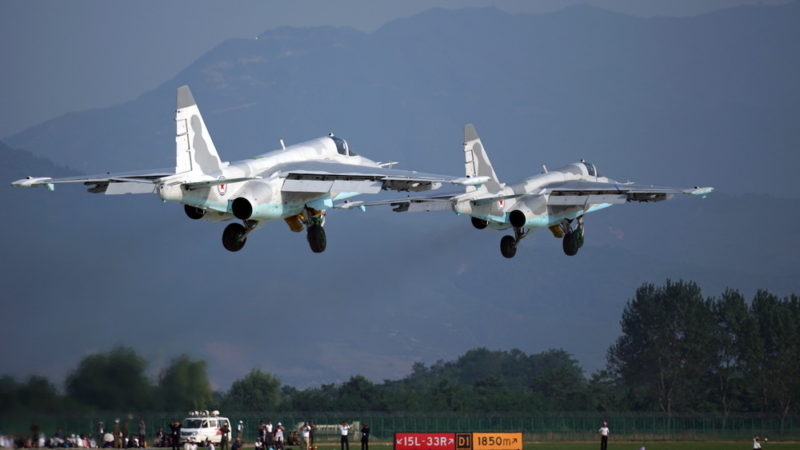
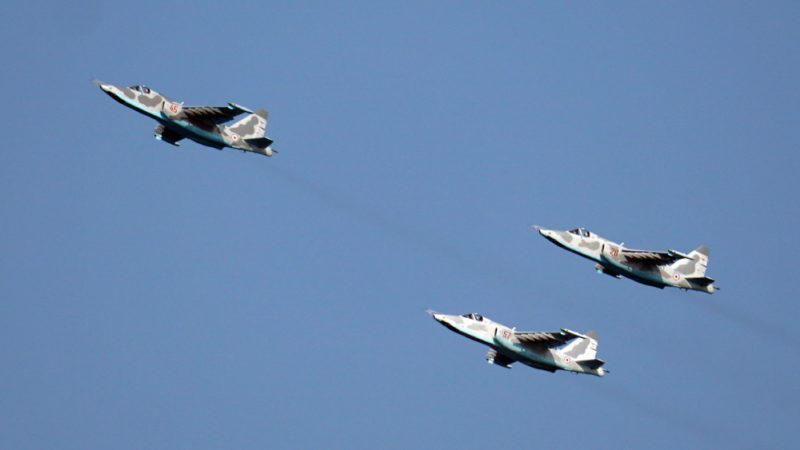
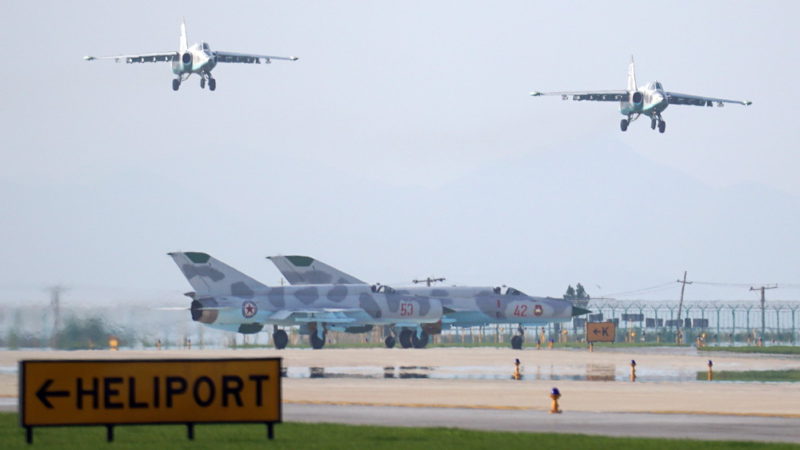
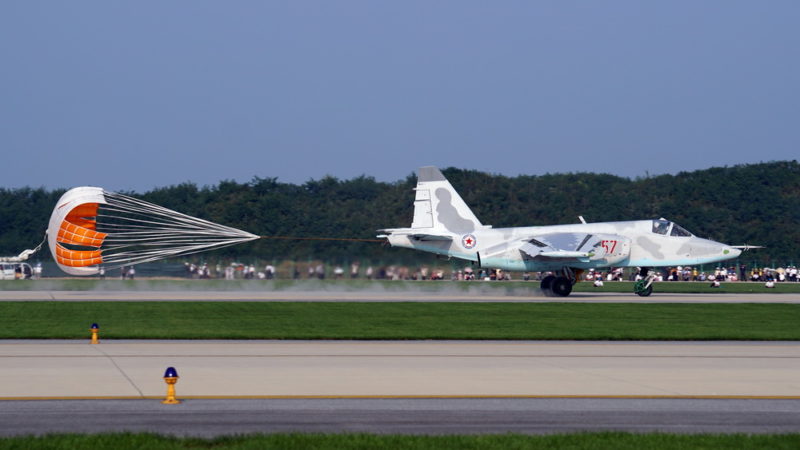
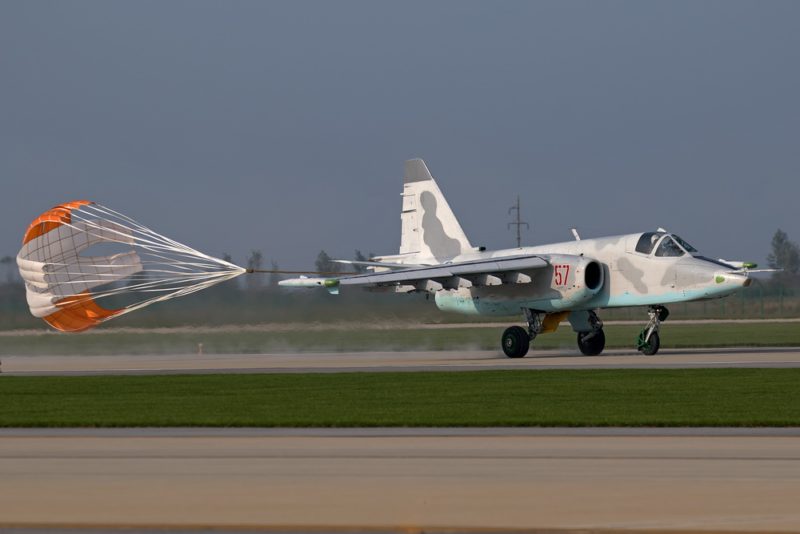
The show ended with a display by the Ilyushin Il-76 heavy lifter and Mil-17 helicopters.
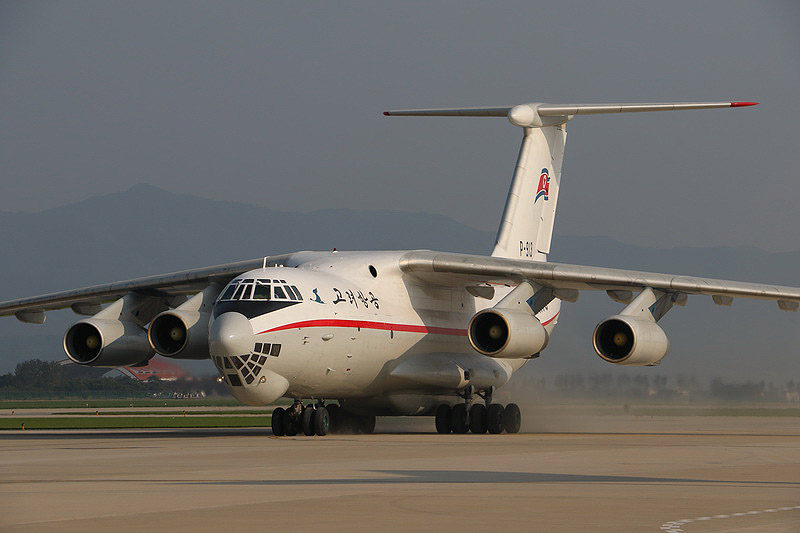
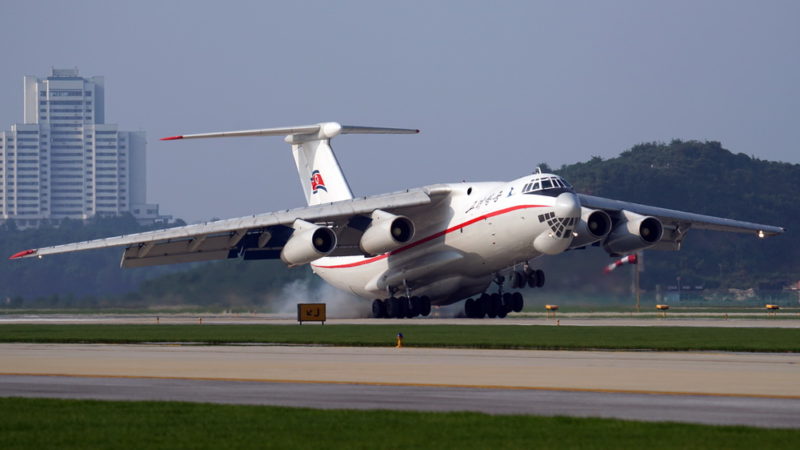
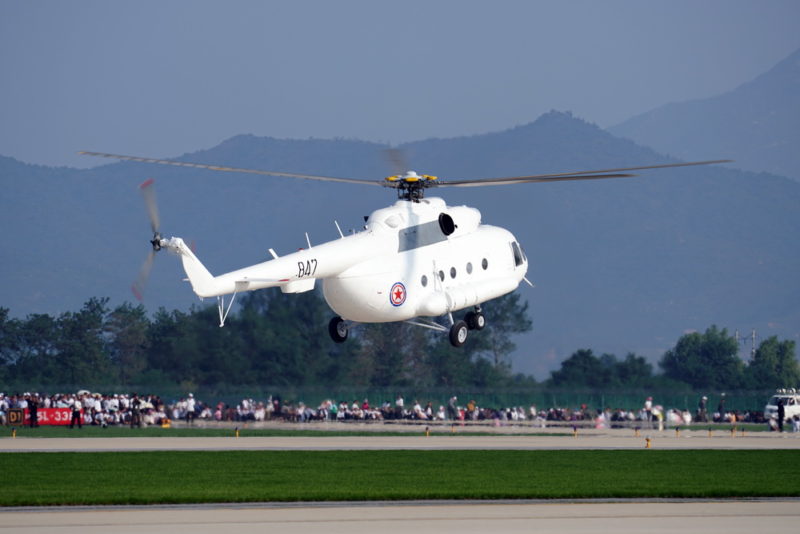
Because North Korea has historically identified as a communist state, all business has been the exclusive preserve of the state, with small stall-holders on street corners in the cities being exceptional diversions into private enterprise. Another aspect of this unusual country is that all foreign visitors are escorted by local guides at all times, with access to local people usually restricted to a wave from the window of the bus.
Awaiting the international group on the far side of the runway were not only dozens of stalls selling snacks, toys, clothing, souvenirs, locally-made Air Koryo models and the tasty produce of dozens of local breweries, but between ten and fifteen thousand Koreans with whom the group could freely mingle with. Virtually no English is spoken in North Korea so interaction was limited to gestures, smiles, and group photos but for a returning traveler to the country, to be able to freely interact with locals was an absolute revelation and represents a massive sea change for the country.
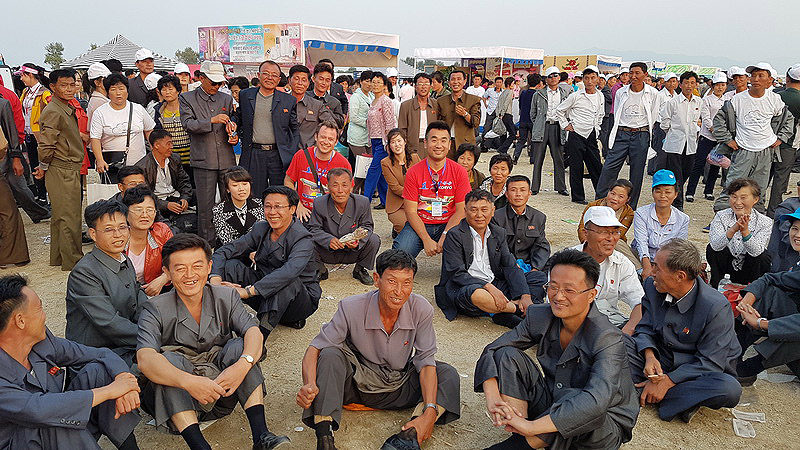
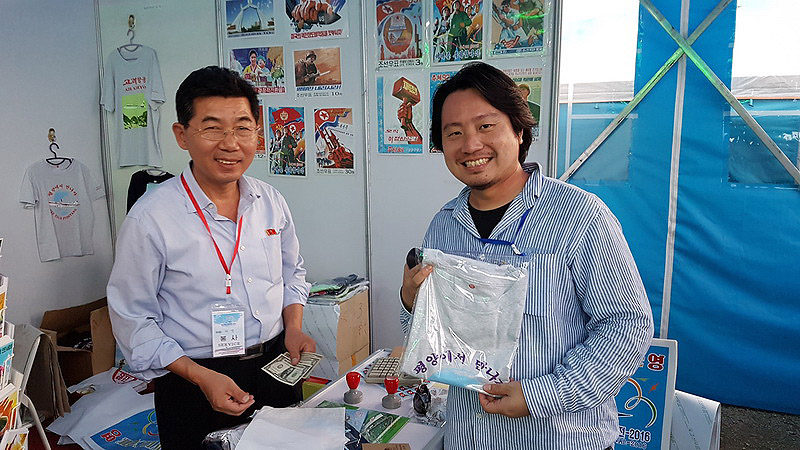
A Red Cross charity raffle took place at the end of the day.
All of the funds is raised for the devastating flood in NW of the country.
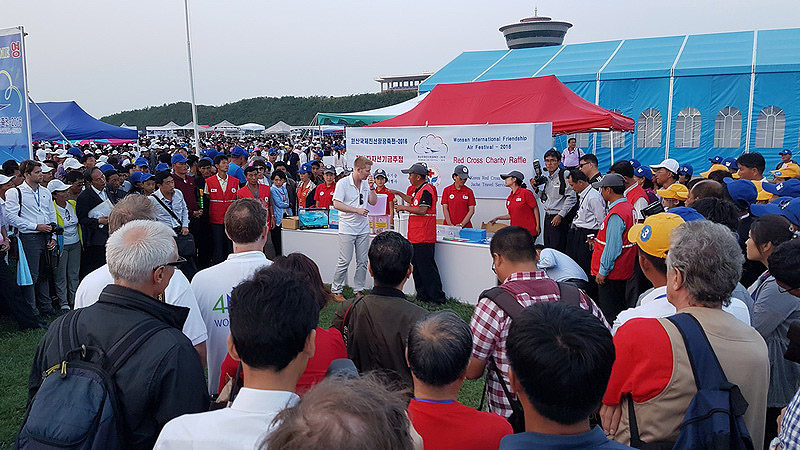
In the evening, a delightful music-and-theatre show was hosted in the city centre amphitheatre to the mutual delight of the international group and thousands of Koreans (who, to a man and woman, love singing and dancing and playing music more than any other nation on the planet).

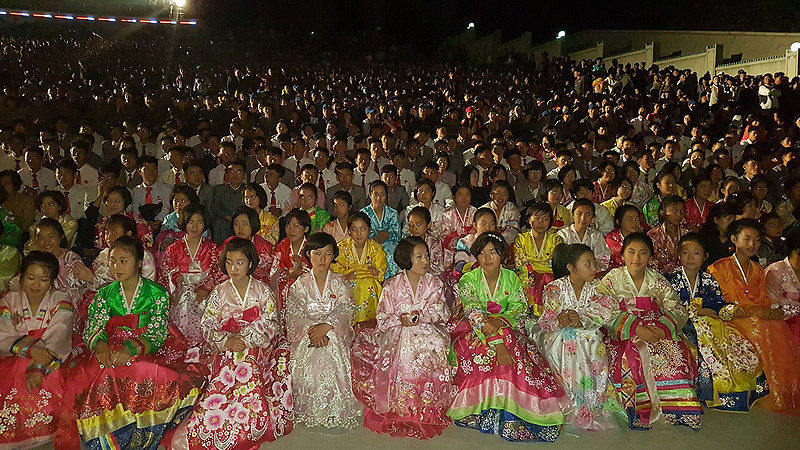
Day two - September 25, 2016
Day two was a few degrees cooler but just as clear and bright. To the amazement of the international group, the military hardware that had flown the day before was now on static display to be inspected and photographed close-up, with a minimum of interference by the authorities (particularly keen observers were gently dissuaded from actually touching the planes). The MiG-29 pilot made a low-key appearance; however when the female pilots who flew the MiG-21 display materialised in front of one of their planes, mayhem broke out and they were soon mobbed by photographers, camera crews and enthusiasts. Stepladders appeared from nowhere to get a better shot of the duo who smiled demurely and answered shouted questions via an interpreter.
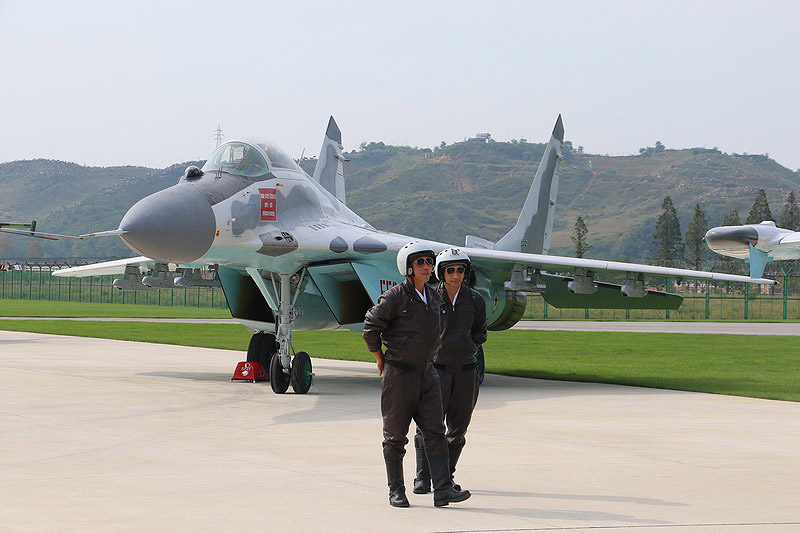
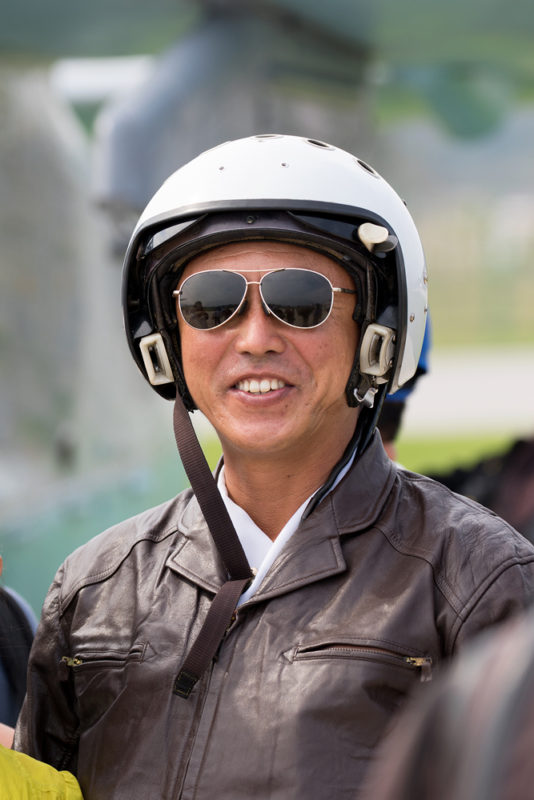
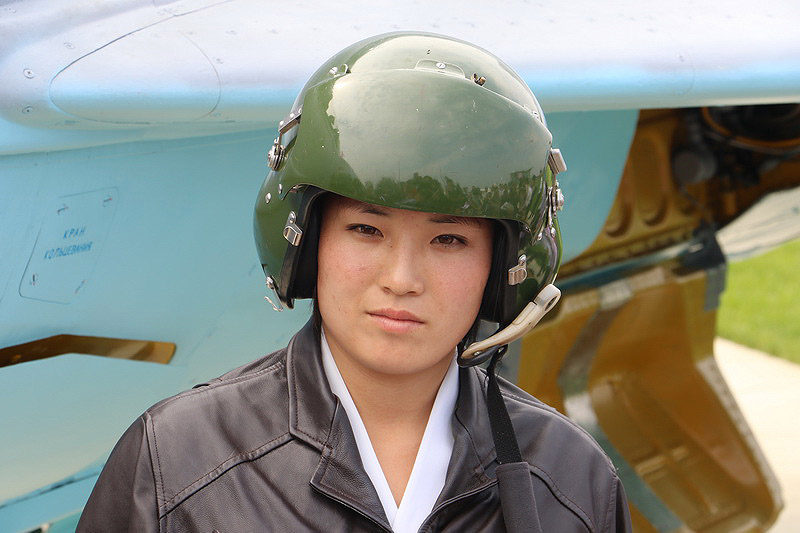
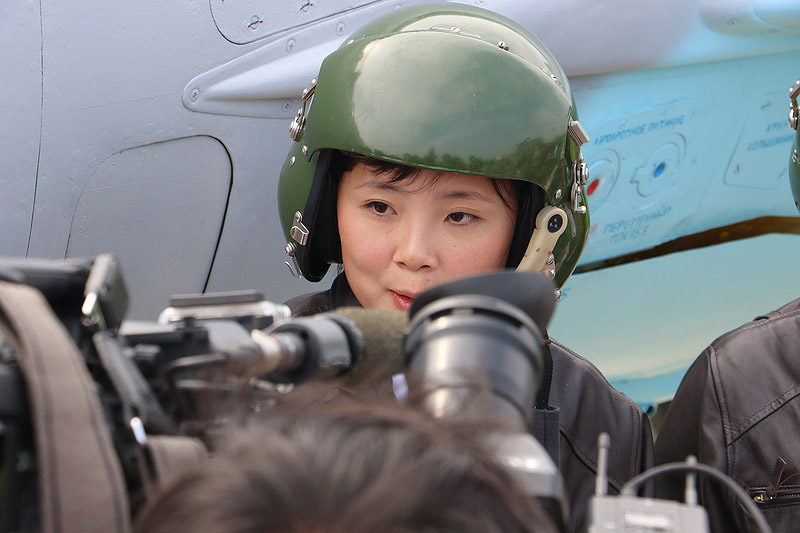
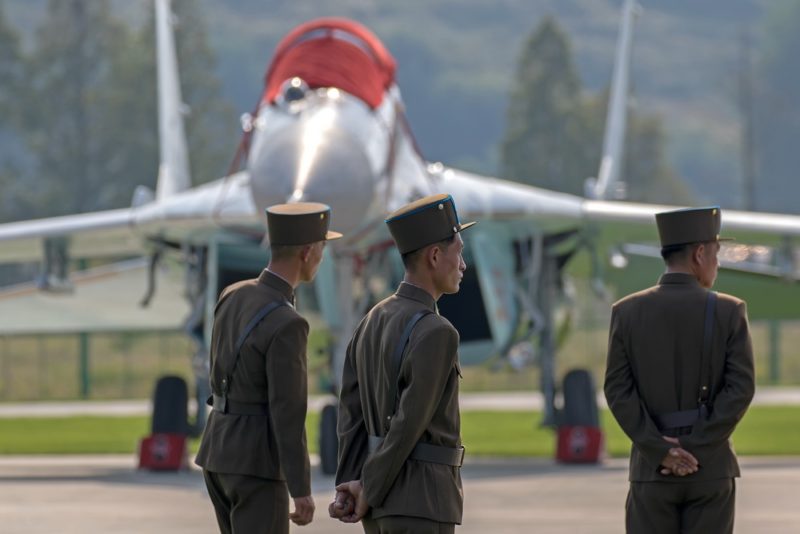
After the excitement died down and the girls left the scene with a couple of Air Koryo crew member buddies, the international group was gradually rounded up and escorted across the field to enjoy a surprisingly entertaining model aeroplane flying competition by the Pyongyang model aeroplane club, followed by some spectacular skydiving by the Korean military and the international skydiving team which included participants from the Czech Republic and the USA among others.
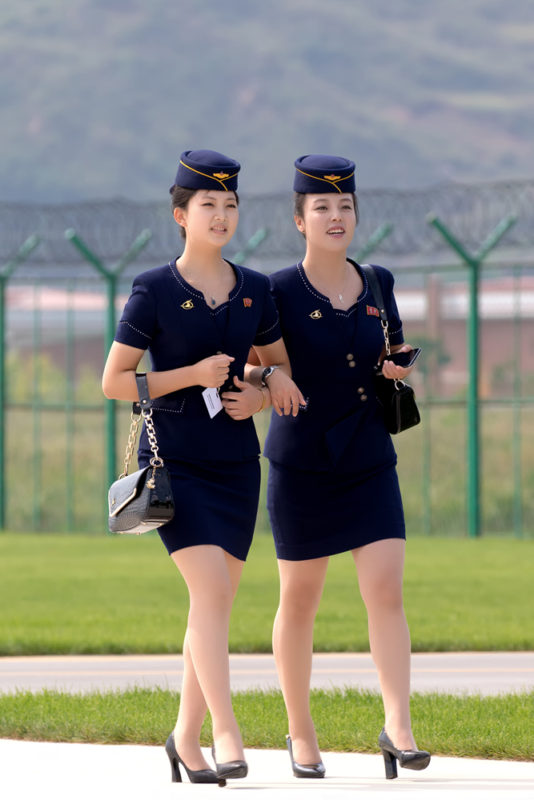
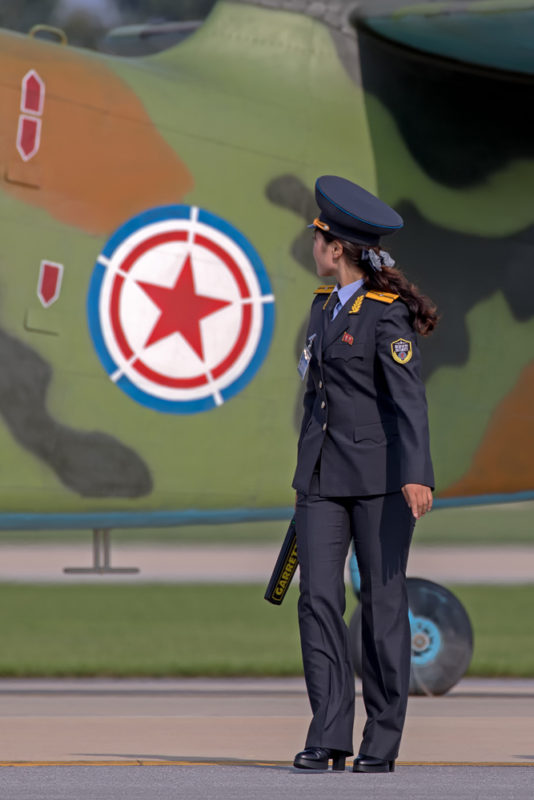
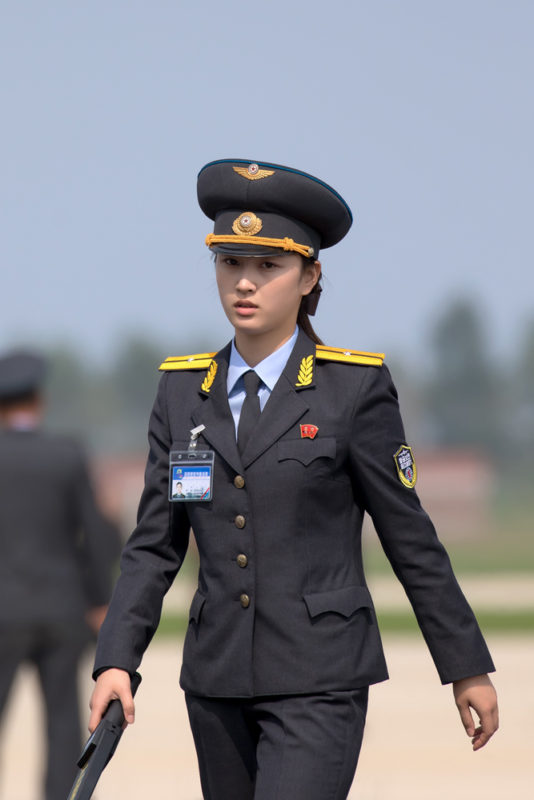
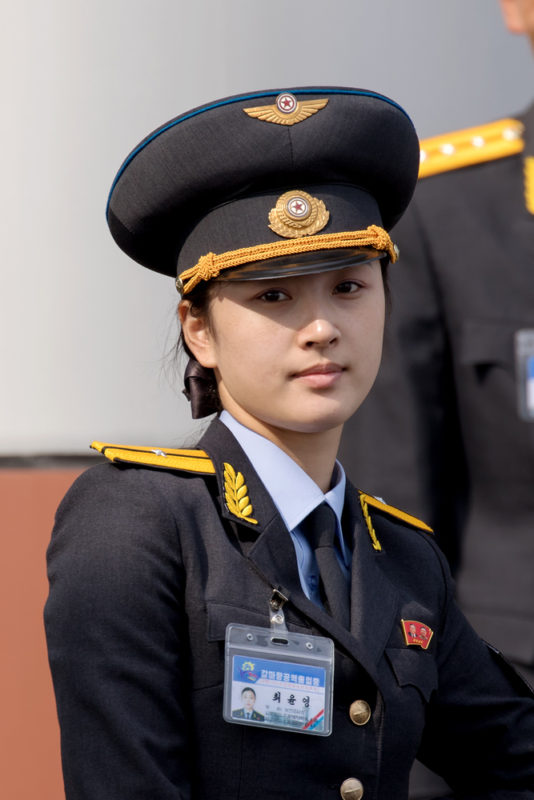
The rest of the day was spent by the international group enjoying joyrides on the Air Koryo vintage fleet, the comings and goings of which provided an impromptu continuation of the airshow for the locals.
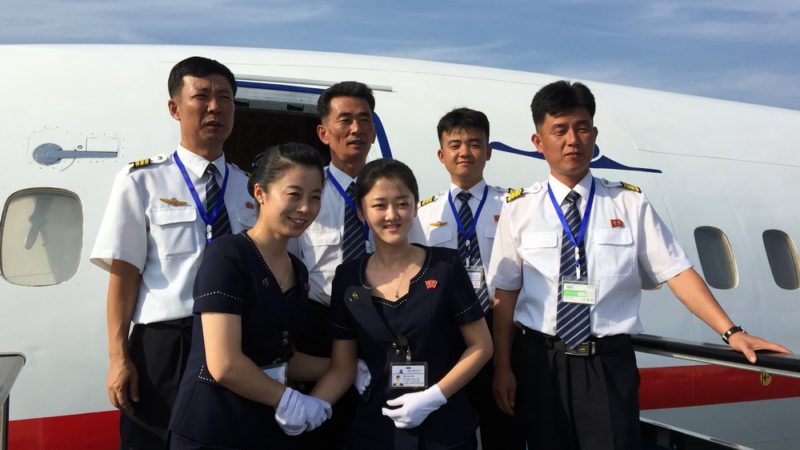
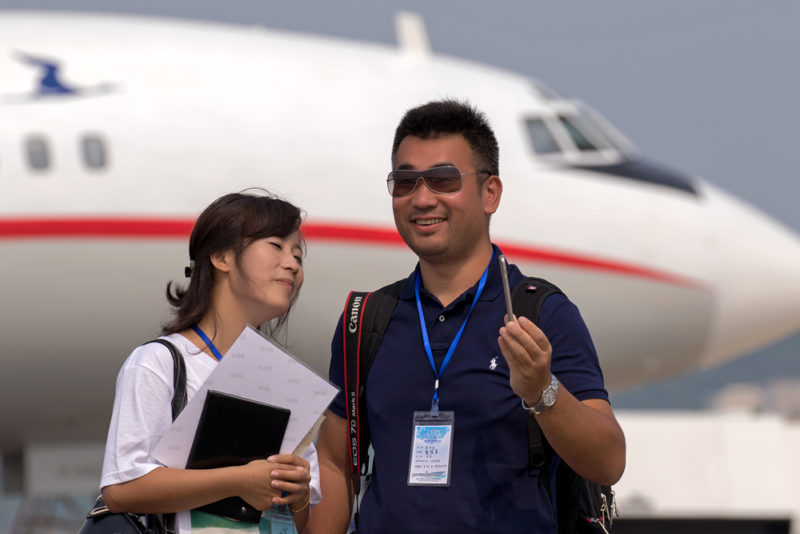
No less than 17 joyflights were operated by Air Koryo fleet of An-24, Tu-134, Tu-154, IL-18, IL-62, IL-76, Mil-17 and Army An-2, Mil-8 and General Aviation Piper Matrix.
It was heaven for Aviation Enthusiast!

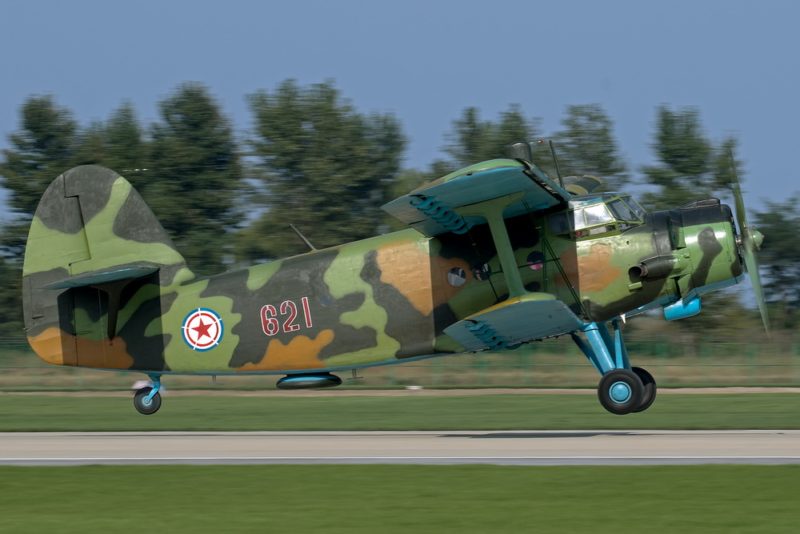
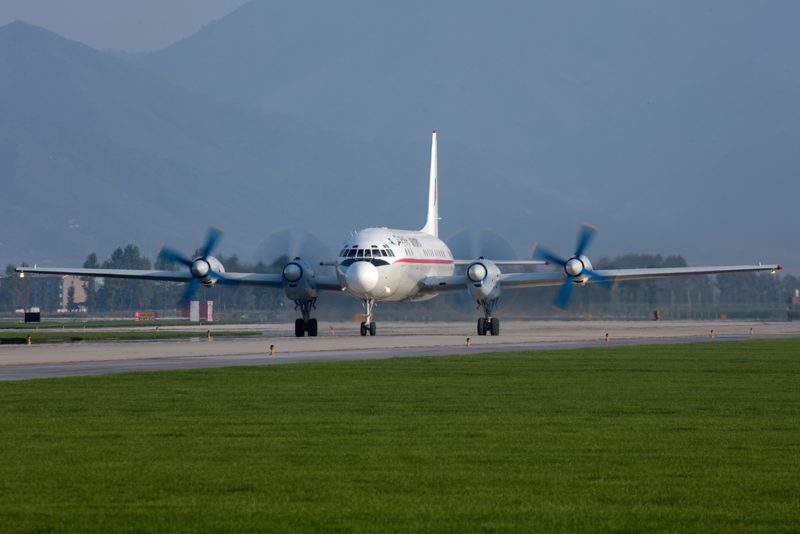

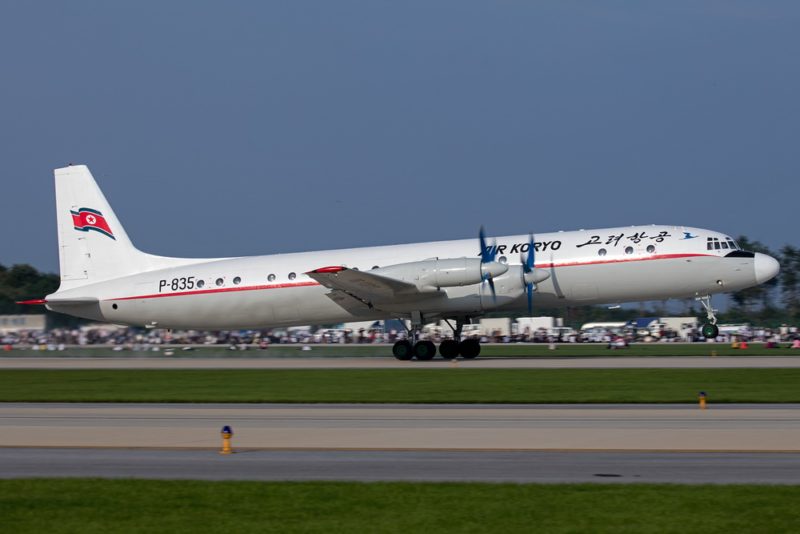

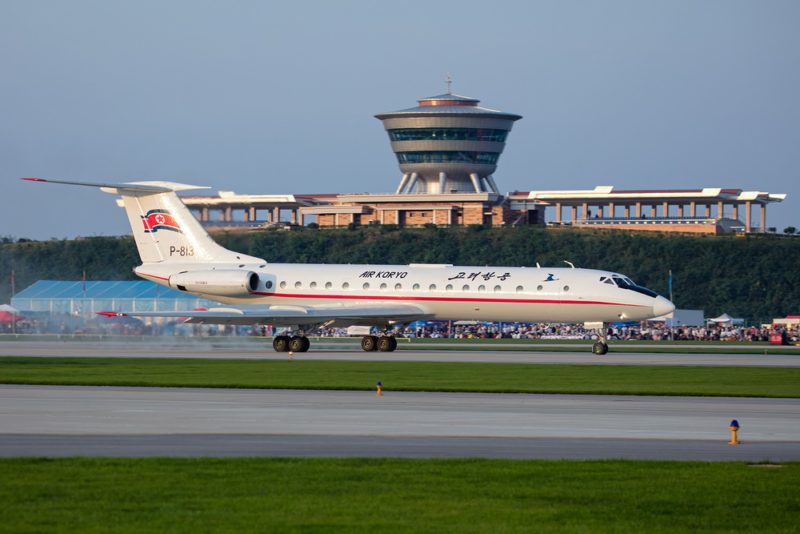
The group was escorted back to the far side for brief closing speeches and a last run at the beer and souvenirs and a final wander among the 15000+ locals.
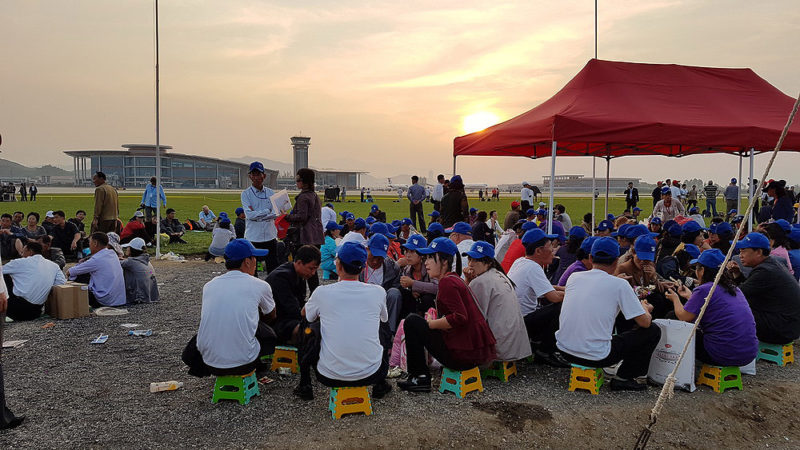
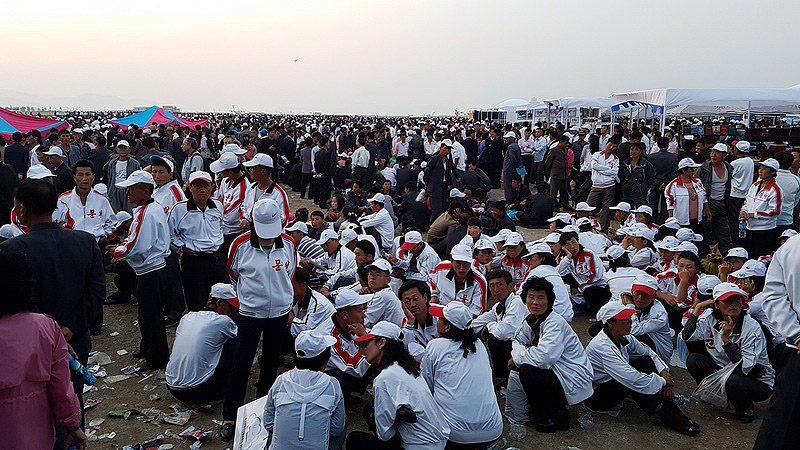
At 6pm, the crowd march on to leave the air show!
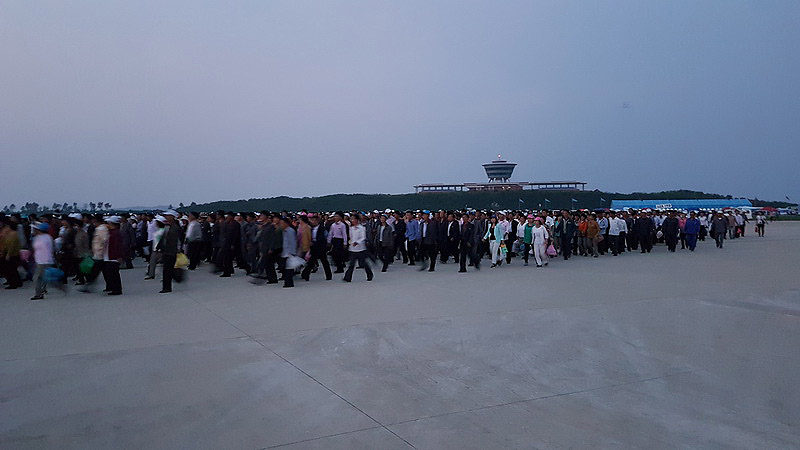
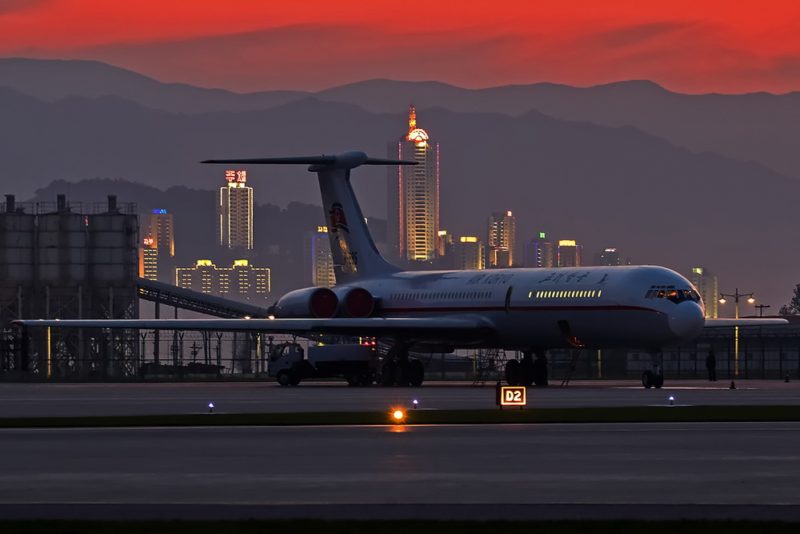
As we thought the show was over, the Korean completely surprised us by holding a mass dance at the town square with no less than 5,000 dancers and 10,000 spectators to welcome us!
Foreigners were invited to dance among locals and freely mingle with them!
It was beyond incredible with the masses!
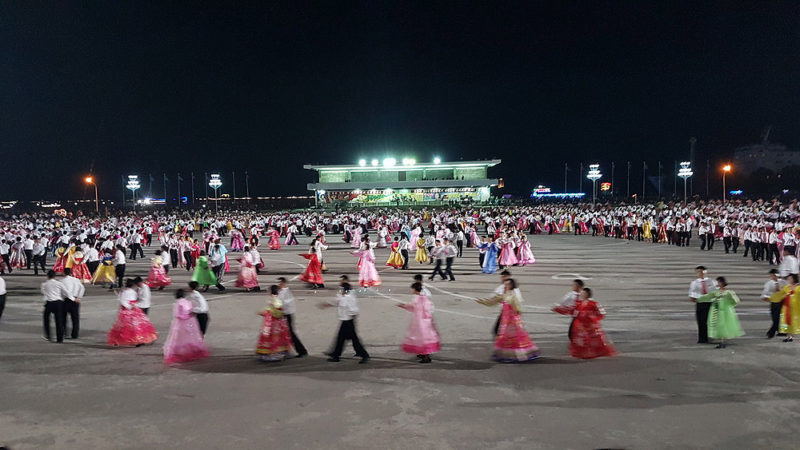
A closing banquet was held downtown in the evening before an early-ish night as the flight to Pyongyang by Il-62 was leaving at 0630 local to connect with the 1000 scheduled flight back to Beijing where the trip ended.
The airshow was an unqualified smash hit, showing off North Korean’s aviation scene (as well as its dizzying array of fine local brews) and bringing together foreign visitors and locals without hindrance for the first time in the country’s history. It represents, in all likelihood, not the beginning of a change in North Korea but more accurately our first glimpse of a country that is well established, where private enterprise is flourishing and where engagement with the outside world is becoming a reality. Who knows what the future holds for this strange and charming country, but there is one way to find out, which is by visiting the 2017 Wonsan Air Show – see you there!
If you're interested in attending Wonsan Air Festival 2017, please let me know.


